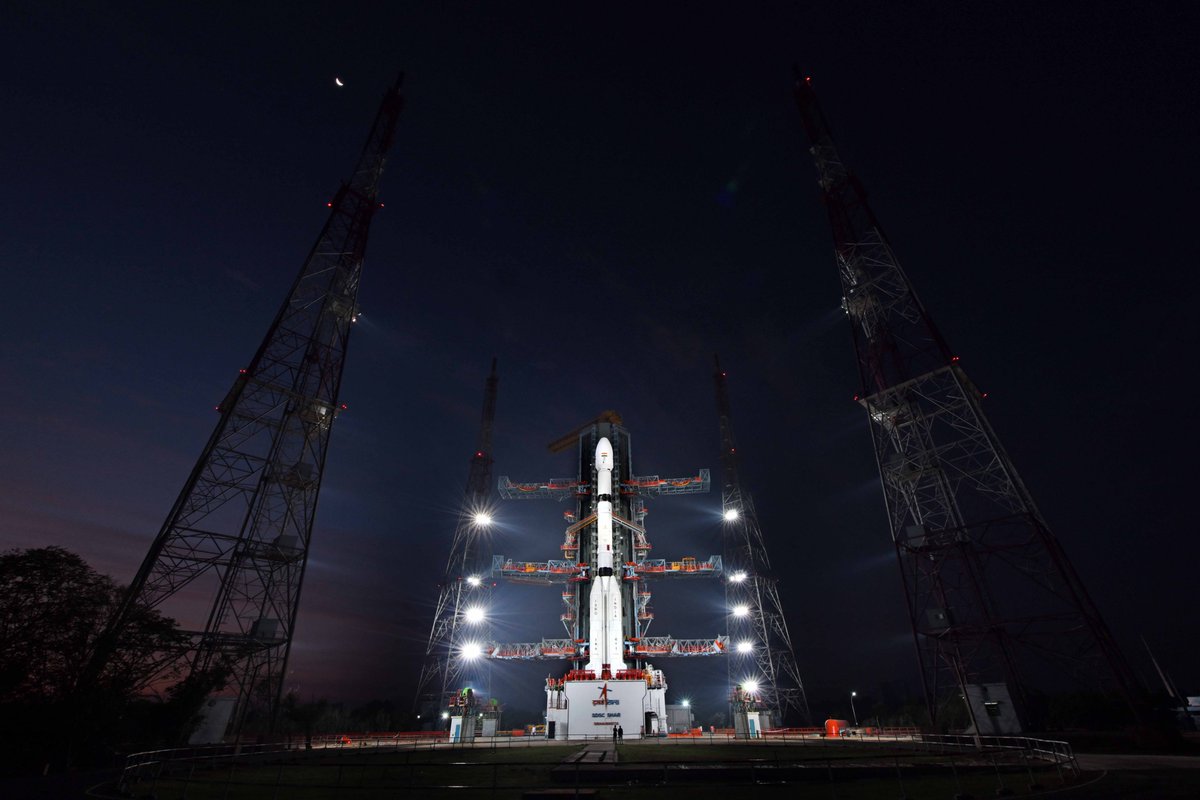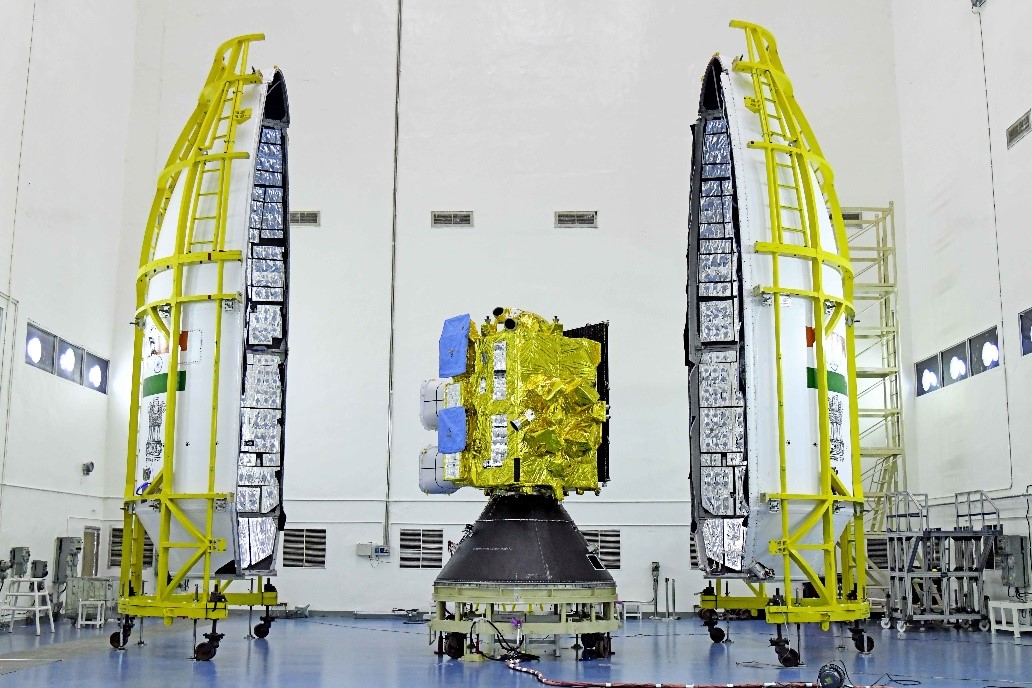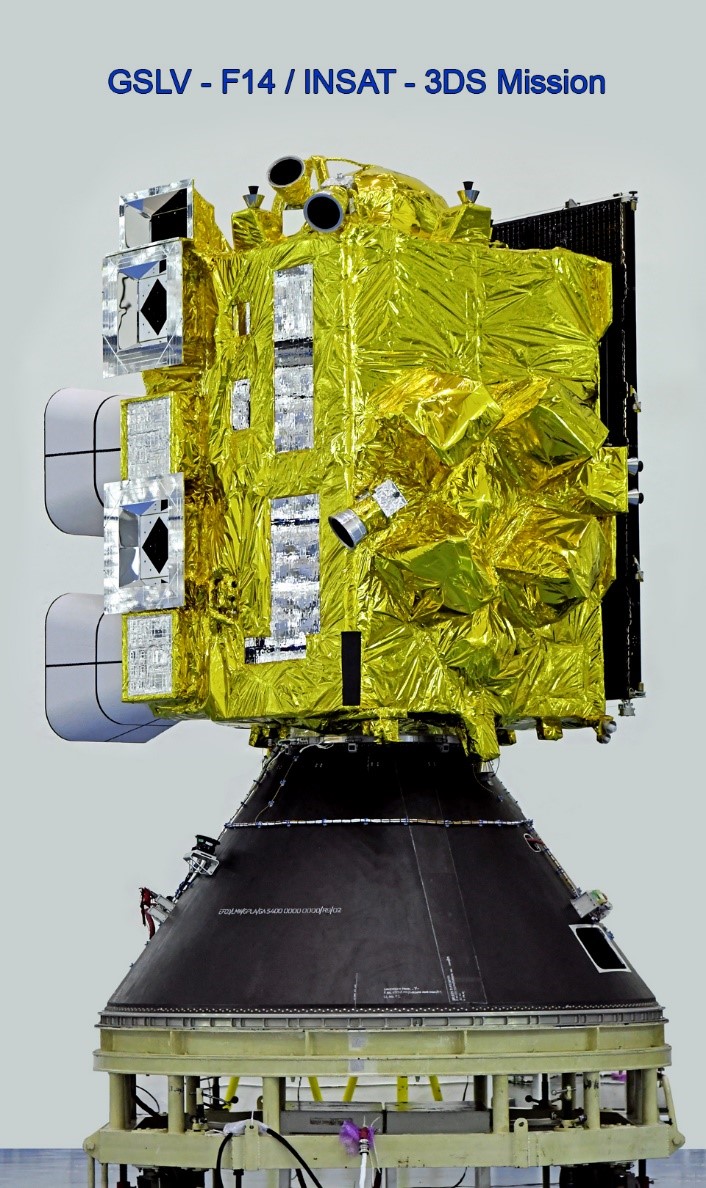ISRO launches INSAT 3DS, the latest generation Climate/Weather satellite
February 17, 2024
Gandhinagar: The launch of the GSLV-F14/INSAT-3DS mission is accomplished on Saturday, February 17, 2024, at 17:30 Hrs. IST from SDSC-SHAR, Sriharikota – a note from ISRO said. In its 16th mission, the GSLV aims at deploying the INSAT-3DS meteorological satellite into the Geosynchronous Transfer Orbit (GTO). Subsequent orbit-raising maneuvers will ensure that the satellite is positioned in a Geo-stationary Orbit, said ISRO in a note.
#WATCH | Ahmedabad, Gujarat: On the launch of ISRO's INSAT-3DS meteorological satellite onboard a Geosynchronous Launch Vehicle F14 (GSLV-F14), Dr. Debanik Roy, senior Scientist and Group Head, Division of Remote Handling and Robotics, Bhabha Atomic Research Centre, Dept. of… pic.twitter.com/g6eWKvESzw
— ANI (@ANI) February 17, 2024
GSLV-F14
Geosynchronous Satellite Launch Vehicle (GSLV) is a three-stage 51.7 m long launch vehicle having a liftoff mass of 420 tonnes. The first stage (GS1) comprises a solid propellant (S139) motor having 139-ton propellant and four earth-storable propellant stages (L40) strapons which carry 40 tons of liquid propellant in each. The second stage (GS2) is also an earth-storable propellant stage loaded with 40-ton propellant. The third stage (GS3) is a cryogenic stage with a 15-ton propellant loading of liquid oxygen (LOX) and liquid hydrogen (LH2). During the atmospheric regime, the Satellite is protected by Ogive payload fairing. GSLV can be used to launch a variety of spacecraft capable of performing communications, navigation, earth resource surveys, and any other proprietary mission.
INSAT-3DS
INSAT-3DS Satellite is a follow-on mission of Third Generation Meteorological Satellite from Geostationary Orbit. GSLV-F14/INSAT-3DS mission is fully funded by the Ministry of Earth Sciences (MoES). It is designed for enhanced meteorological observations and monitoring of land and ocean surfaces for weather forecasting and disaster warning. The satellite will augment the Meteorological services along with the presently operational INSAT-3D and INSAT-3DR satellites. Indian Industries have significantly contributed to the making of the Satellite.
Various departments of the Ministry of Earth Sciences (MoES) such as the India Meteorology Department (IMD), National Centre for Medium-Range Weather Forecasting (NCMRWF), Indian Institute of Tropical Meteorology (IITM), National Institute of Ocean Technology (NIOT), Indian National Center for Ocean Information Services (INCOIS) and various other agencies and institutes will be using the INSAT-3DS Satellite data to provide improved weather forecasts and meteorological services.
#ISRO UNSTOPPABLE!
Celebrating the launch of INSAT 3DS …the latest generation Climate/Weather satellite.
Proud to be associated with Department of Space at a time when Team ISRO continues to accomplish one success after the other,with personal patronage from PM Sh @NarendraModi pic.twitter.com/Gs5GUxw84O— Dr Jitendra Singh (@DrJitendraSingh) February 17, 2024
The primary objectives of the mission are:
- To monitor Earth’s surface, carry out Oceanic observations and its environment in various spectral channels of meteorological importance.
- To provide the vertical profile of various meteorological parameters of the Atmosphere.
- To provide the Data Collection and Data Dissemination capabilities from the Data Collection Platforms (DCPs).
- To provide Satellite Aided Search and Rescue services.
More Details
Satellite salient features
| Mission | Meteorological services Data relay and Satellite Aided Search & Rescue services |
| Payloads | 6 channel Imager 19 channel Sounder Data Relay Transponder (DRT) Satellite Aided Search & Rescue transponder (SAS&R) |
| Orbit | Geostationary orbit |
| Structure | I-2k platform |
| Thermal | 6 channel Imager Passive and active thermal control system Bi-annual yaw flip to reduce the thermal load on the passive coolers |
| Power generation | 42 V Sunlit regulated single bus Power generation 1505W (Equinox) I-2k Solar panels and Li-Ion 100Ah Battery for eclipse support |
| Launch vehicle | GSLV with 4 m diameter. Ogive Payload Fairing Standard 937mm diameter. interface |


Recent Stories
- GPSC announces recruitment for over 2,800 positions in Health Dept
- ACB nabs a Police man in bribe case in Bhavnagar
- Rs. 25.68 lakh worth MD drugs recovered from Naranpura based house
- Bulldozer drive continues on second day in Vadodara
- Cheater steals a brand-new BMW car duping the truck driver in Ahmedabad
- Gujarat govt's 11th Chintan Shivir to be held in Somnath from Nov 21 to 23
- Expert team from Kochi to visit Surat to check feasibility of Water Metro
